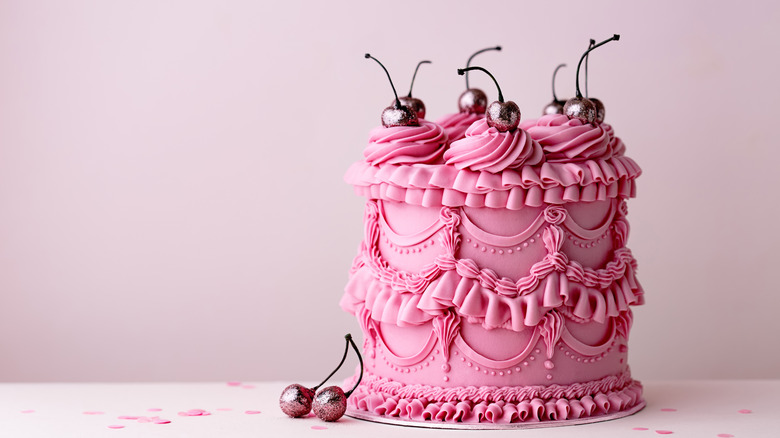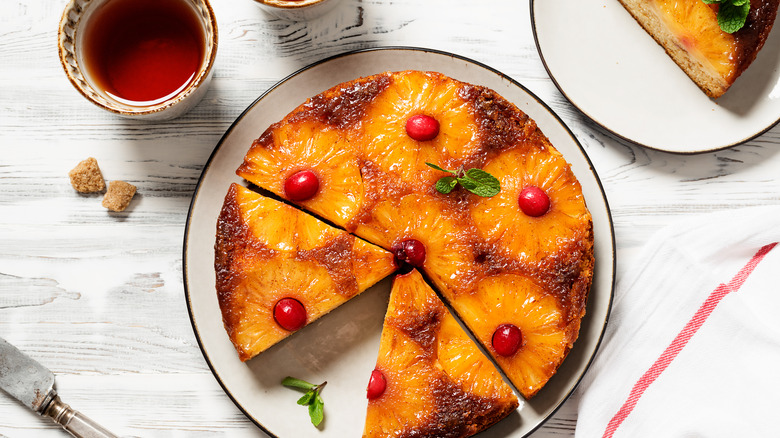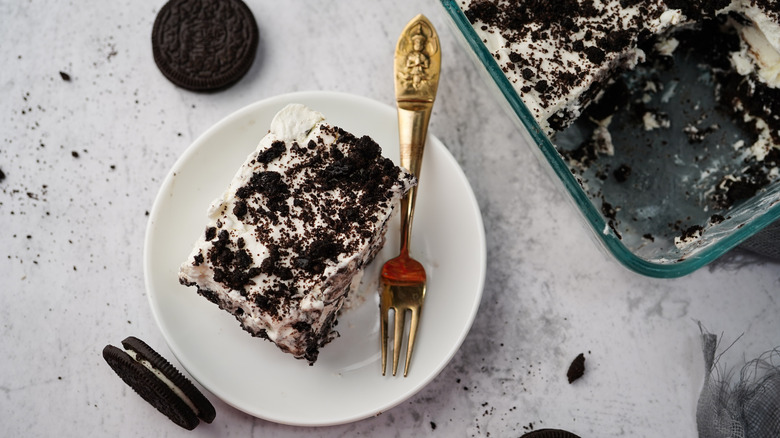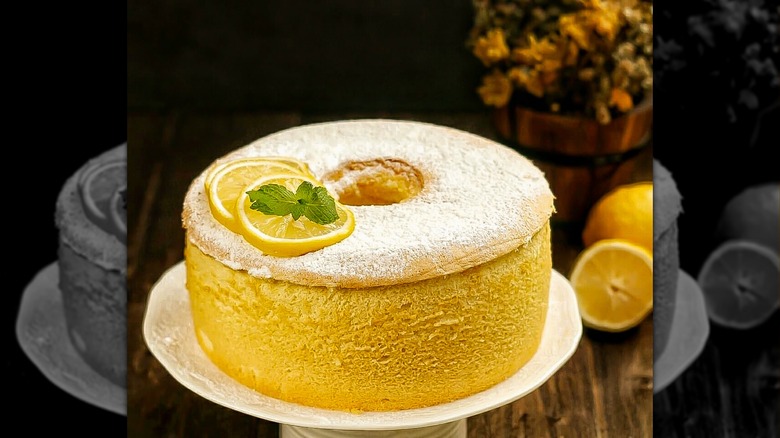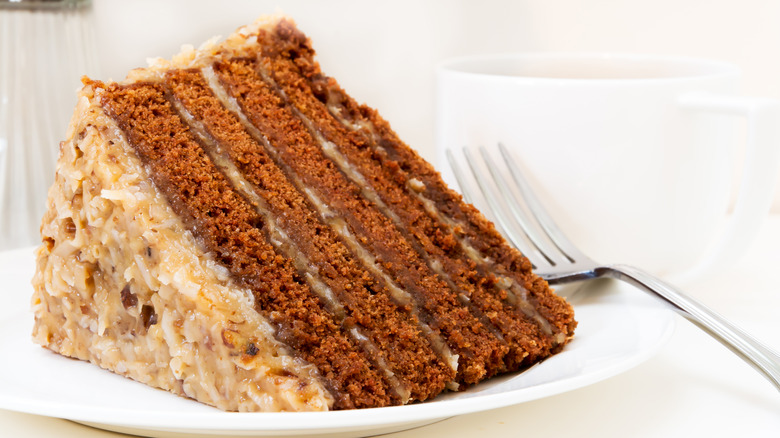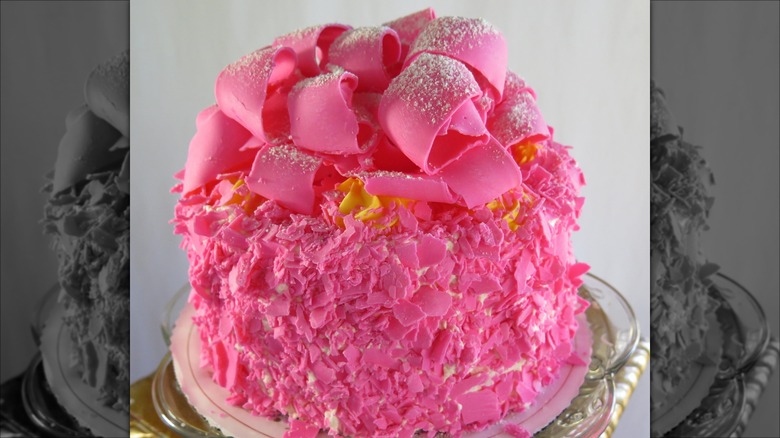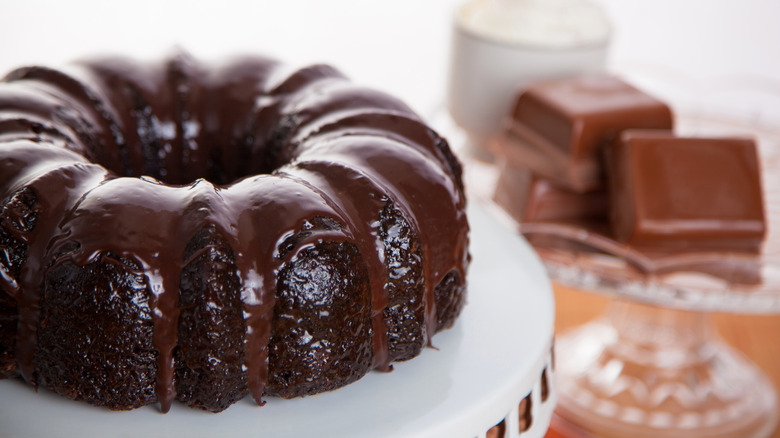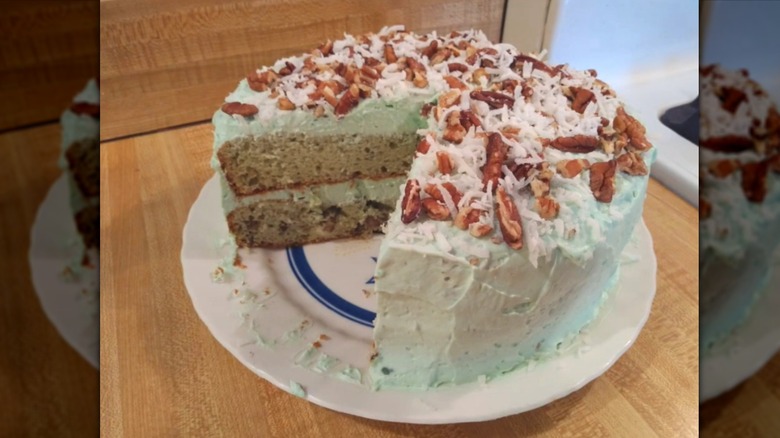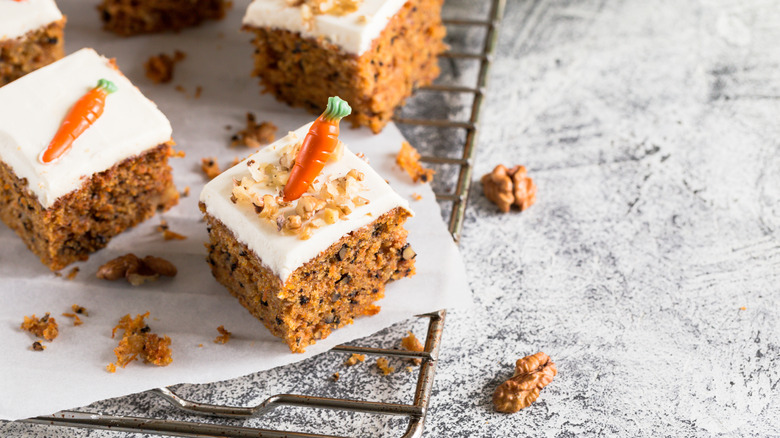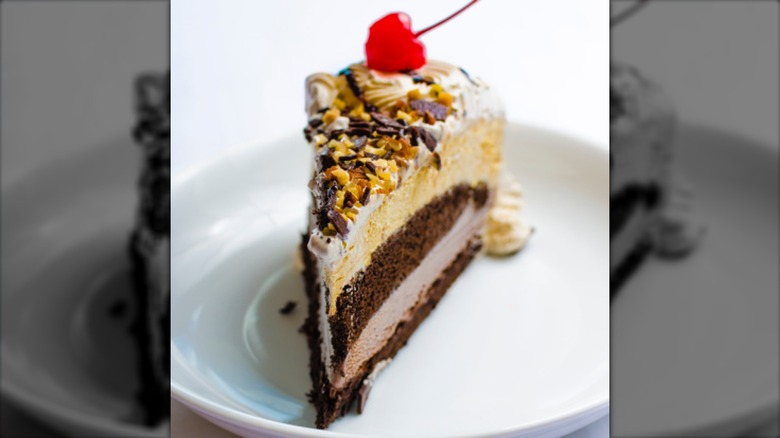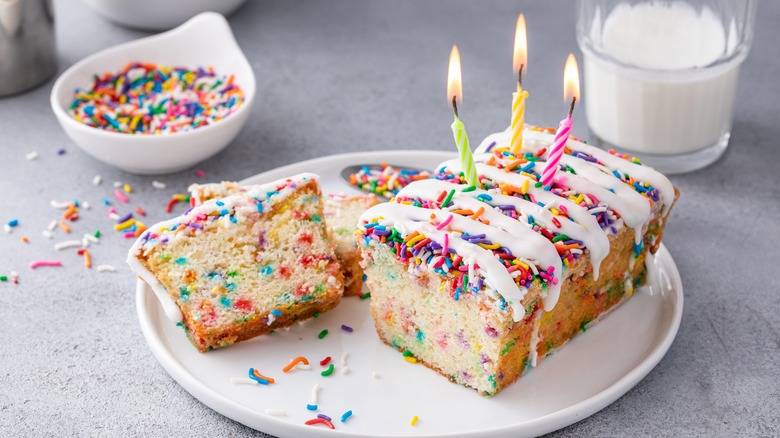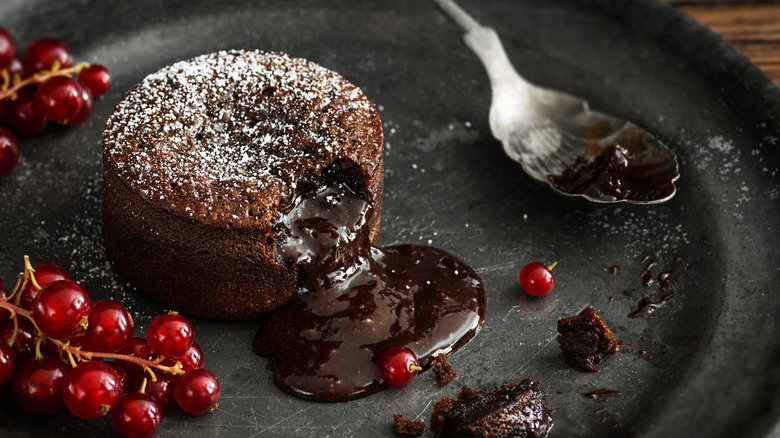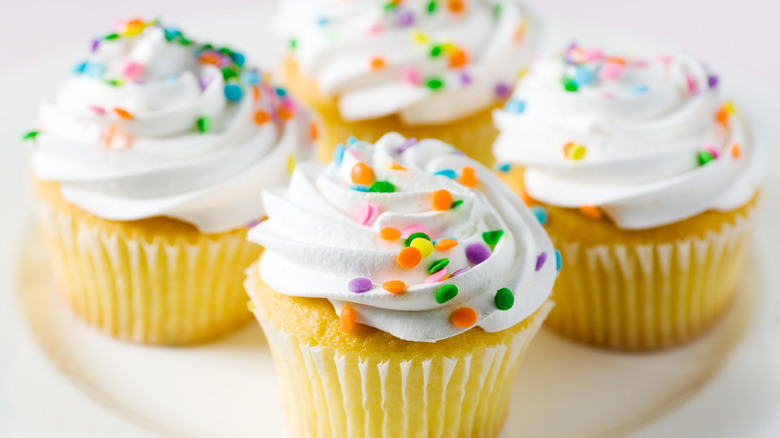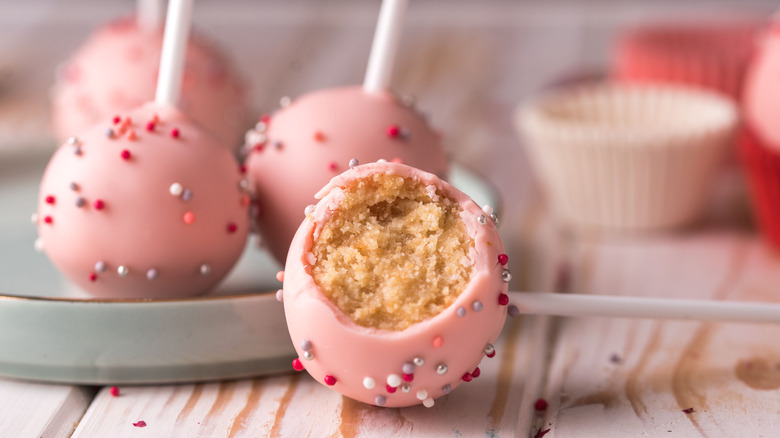What Cake Was Popular The Year You Were Born?
Ever wondered which sweet confection took the cake (pun intended) the year you were born? There's no denying that the world of cake has seen its fair share of flavors and trends come and go throughout the years. Some have withstood the test of time, while others are better left in their respective decades. It may sound surprising, but the flavors, colors, and ingredients that make up these cakes serve as a perfect time capsule to capture the cultural moment that gave birth to each recipe. Whether you were born in the era of the Icebox cake or the Molten Chocolate Lava cake, each year has its own slice of cake history waiting to be savored.
So, grab a fork and prepare to explore the delectable world of cakes, and find out which scrumptious treat was all the rage the year you made your grand entrance. Whether you're celebrating your vintage roots or just curious about the past, this trip through time promises to be as sweet as the frosting on your favorite slice. Let's dig in!
1925 to 1928: Pineapple Upside Down Cake
Who doesn't love a delicious yellow cake with slices of pineapple and cherries baked right in? There are few desserts that can match the timeless charm and appeal of the pineapple upside-down cake. This delightful treat has a history that stretches back centuries, with variations of upside-down fruit desserts appearing in various forms across the globe. But the pineapple upside-down cake would achieve national stardom in 1925, thanks to an ingenious move by the Hawaiian Pineapple Company.
In an effort to promote its pineapple products and inspire culinary creativity, the company decided to run a nationwide recipe competition. It invited home bakers, chefs, and anyone with a passion for cooking to submit their best pineapple-inspired recipes to be judged by representatives from Good Housekeeping, McCall's Magazine, and Fannie Farmer's School. The response to this competition was nothing short of astounding. A staggering 2,500 pineapple upside-down cake recipes flooded in out of the total 60,000 submissions.
1929 to 1939: Icebox Cake
Sure, the icebox cake may seem simple and old-fashioned now, but at the beginning of the 20th century, this cake reflected the changing landscape of American kitchens like no other. This delightful treat gets its name from the invention that made it possible: the icebox, a precursor to modern-day refrigerators. While variations on the icebox cake recipe would circulate throughout the turn of the century, it wasn't until the '30s that it truly came into its own; for during this time, refrigerators began to be seen as an indispensable kitchen appliance, instead of a luxury.
As refrigerators became more commonplace in American households, home cooks had a newfound ability to keep perishable ingredients chilled and food could last longer. This technological advancement opened up a world of possibilities for creating cold and refreshing desserts that could be stored in the icebox. It became a go-to dessert, especially during hot summer months when a chilled treat was a welcome respite from the heat.
The beauty of the icebox cake lay in its simplicity; alternating layers of chocolate wafers and whipped cream are left to meld and soften over time. If you have fond memories of icebox cakes made with classic Nabisco wafers, then you're likely mourning the loss of the key ingredient of a true classic.
1948 to 1950: Chiffon Cake
If there's one cake that's absolutely synonymous with the '40s, it's the decadent and airy chiffon cake. This iconic recipe was first developed in the 1920s by Los Angeles caterer Henry Baker. Baker's goal was to create a cake that was lighter than angel food cake and more flavorful and indulgent than the traditional sponge. His solution? By whipping up egg whites rather than using vegetable oil, his unique cake was lighter-than-air without compromising on flavor. Baker served his signature cake to the Hollywood elite and at exclusive events, but he never let his secret slip. His elusive recipe remained under lock and key for nearly 20 years, until he decided to sell it to General Mills, the creators of "Betty Crocker," with the hope that the recipe would be made available to housewives across the country.
In 1947, General Mills published the chiffon cake recipe in the "Betty Crocker Recipe Card Library," marketing it as "the first new cake in 100 years!" and the cake became an instant success. Home cooks everywhere fell in love with the chiffon cake's airy, moist crumb, as well as its versatility — it was just as delicious iced or topped with fresh fruit or confectioner's sugar. According to the Seattle Times, shortly after the release of the Chiffon cake recipe, sales of cake flour went up by as much as 20%.
1957 to 1959: German Chocolate Cake
If you thought the German chocolate cake was a traditional German recipe, we don't blame you. The German chocolate cake is a classic dessert with a somewhat misleading name and actually has nothing to do with Germany. This cake owes its name to a specific type of chocolate used in the original recipe, known as German's sweet chocolate. In fact, the original name for the cake was German's chocolate cake.
The creator of the original German's Chocolate Cake was Mrs. George Clay, a Texas housewife who submitted her recipe to the Dallas Morning News in 1957. Her innovative twist on chocolate cake with a unique coconut frosting quickly captured the hearts and taste buds of dessert lovers across the nation.
What makes the German chocolate cake so special? It's all about the layers of flavor and texture. At its core, you'll find a moist and tender chocolate cake that serves as the perfect canvas. But it's the sweet, gooey coconut-pecan frosting that truly steals the show. This unique frosting, loaded with shredded coconut and crunchy pecans, adds a delightful contrast to the cake's richness.
1960 to 1965: Pink Champagne Cake
Drawing inspiration from the sophistication and glamour of old Hollywood, the pink champagne cake is a symbol of elegance. This delightful dessert is primarily known for its pastel pink color and its light and airy texture, with multiple layers of sponge cake infused with the delicate essence of pink champagne (or, for the teetotaling crowd, pink soda pop). Everything about this cake, from the colors and texture to the subtly sweet flavor gives diners a taste of the finer things in life.
The pink Champagne cake found its fame in the '60s, a decade marked by an insatiable appetite for luxury and extravagance in a booming post-war American economy. The eye-catching pink color and indulgent texture perfectly encapsulated the era's spirit, becoming an iconic dessert choice for celebrations and special occasions — it was also a surefire way to impress guests at any house party.
One notable establishment that has contributed to the pink Champagne cake's enduring fame is the Madonna Inn, nestled in San Luis Obispo, California. Known for its whimsical maximalist decor, The Madonna Inn has served its signature pink Champagne cake for generations. Its hot pink-hued layers and dreamy champagne-infused frosting have become synonymous with the Madonna Inn experience, enticing travelers and locals alike; it's also a hit for the holidays.
1966 to 1971: Tunnel of Fudge Cake
In the mid-20th century, when recipe blogs were still decades away, home bakers found their culinary inspiration in magazines, cookbooks, and especially baking competitions. One popular competition was the Pillsbury National Bake-Off, which has been ongoing since 1949. It allowed amateur bakers to showcase their talents and culinary creativity. Among the many winners and runners-up that gained national attention throughout the years, one dessert stood out as a beloved favorite to this day: the Tunnel of Fudge Cake.
The Tunnel of Fudge Cake is a chocolate lover's dream. This delightful recipe, submitted by Houston native Ella Rita Helfrich, secured a runner-up spot in the 1966 Bake-Off competition and immediately became a hit nationwide. Picture a luscious chocolate cake with a soft, fudgy center, generously drizzled with a chocolate glaze on top. It was an absolute must-try treat for chocolate enthusiasts and hostesses alike throughout the '60s.
And it wasn't just the delicious flavors that made this recipe famous. The Tunnel of Fudge cake had a distinctive shape that many amateur bakers had never seen before — it was baked in a bundt pan. This type of pan was a relatively recent invention and had only been around since about 1950, meaning it was still relatively obscure in the culinary scene. When bakers everywhere tried to get their hands on a bundt pan to try the Tunnel of Fudge for themselves, sales of the pan soared, and today it's considered a classic baking staple.
1972 to 1976: Watergate Cake
It's fluffy, it's nutty, and it's green, but why on earth is it called the Watergate cake? It's unclear why this eye-catching green dessert takes its name after the infamous scandal that would eventually lead to the resignation of President Nixon in 1974. It wasn't served in the Watergate Hotel, and it wasn't Nixon's favorite cake. But it's clear that the Watergate cake perfectly captured the spirit of the times when the cultural zeitgeist was fixed on the Watergate scandal and the eventual fallout.
Regardless of its origins, the cake itself became an overnight sensation during the early '70s and features ingredients like pistachio pudding mix (that's where it gets its famous pastel green color), 7-Up (yes, the soda), eggs, walnuts, vegetable oil whipped topping, and a generous garnish of chopped pecans. It makes for a simple and easy-to-make dessert that's light and refreshing during the warmer months.
It's unclear who first came up with this cake idea, but recipes have been published at least as far back as September 1974, just weeks after Nixon's resignation. After a Watergate cake recipe was published in the Washington Post in 1975, there was apparently such a demand for pistachio pudding mix in the Washington, D.C. area that businesses couldn't keep up. And this wasn't the end of the '70s fascination with pistachio green desserts; not long after the Watergate cake, there came the Watergate salad.
1977 to 1980: Carrot Cake
While some cakes on this list might be relatively recent inventions, the carrot cake has a long and fascinating history. Carrot cake has been around for centuries in one form or another, dating all the way back to the medieval period, when a dessert known as "carrot pudding" was made by boiling or steaming carrots to release the natural sugars in the vegetable.
But the carrot cake that we know and love today wouldn't come about until the '60s when the idea emerged to pair it with a sweet cream cheese frosting that perfectly balances the spicy and flavorful cake sponge. From then on, the carrot cake became a must-have dessert through much of the decade.
Another reason for the cake's popularity was the perception that it was a healthy food. Yep, you read that right! Because there were shredded carrots in the recipe, it was marketed as a dessert you could eat while dieting, because it was "healthier" than other cakes.
1980 to 1988: Ice Cream Cakes
Is there any better combination than cake and ice cream, especially when you're craving something sweet? It's like a match made in dessert heaven. Ice cream cakes, as you might guess, have been served in various forms for almost as long as ice cream itself has been a thing. But if you fast forward a bit to the late '70s and early '80s, it's clear it was truly having its moment in the spotlight.
Typically, ice cream cakes feature layers of cake and ice cream, often covered in whipped cream or frosting. When companies like Dairy Queen and Carval released their own versions, ice cream cakes began to explode in popularity. It wasn't long before you couldn't go to a party without seeing one of these delightful whales grinning at you from the dessert table.
And it wasn't just ice cream shops that were banking on this trend — you could also pick up an ice cream cake at your local grocery store. In 1981, Viennetta ice cream cakes were available in supermarkets. With their intricate layers and smooth, swirly patterns, they had folks rushing to the frozen food section to grab one (or two, who's counting?).
1989 to 1993: Funfetti Cake
All the '90s kids know that it wasn't a birthday party without a Funfetti cake. This beloved and nostalgic dessert trend was first introduced to the world in 1989 when Pillsbury released a ready-made vanilla cake mix that included colorful sprinkles right in the batter. As the cake was baked, these sprinkles melted, creating a burst of vibrant colors throughout the sponge.
This instantly made plain cakes seem kind of boring, and by the '90s, having a Funfetti cake was the ultimate cool move for a birthday party. With its eye-catching rainbow sprinkles, Funfetti cake not only tasted great but also looked like a party in cake form.
Over the years, Funfetti has evolved beyond cake mixes. You can now find Funfetti in various forms, from cookies to pancakes, giving you even more opportunities to add a sprinkle of color to your life. While Funfetti has certainly had its moment, it's still an endlessly appealing addition to any celebration.
1994 to 1999: Chocolate Molten Lava Cake
There was a time when chocolate molten lava cake was the epitome of fine dining. Known for its decadent, oozing center of warm chocolate, this dessert was born out of upscale restaurants in Manhattan. The recipe is mainly credited to French chef Jean-Georges Vongerichten, who first began serving the dish in the late '80s (though other chefs claim to have invented it around this time). The story goes that a batch of chocolate cakes that he was baking came out undercooked, with the outer part of the cake solidified but the inner part still gooey and liquid.
By the mid-'90s, molten chocolate lava cake had made its way from the fine dining tables of Manhattan to the menus of casual family restaurants, where it cemented itself as the must-have dessert of the decade. This indulgent treat delighted diners with its combination of a delicate cake exterior and a gooey chocolate interior. Pair it with a scoop of vanilla ice cream and you've got a timeless classic on your hands!
2000 to 2007: Cupcakes
Cupcakes are a simple concept with a centuries-long history. In fact, we've had small personal-sized cakes since at least the 18th century, when Amelia Simmons included a recipe for "a light cake to bake in small cups" in her landmark cookbook, "American Cookery," the nation's first published cookbook. Since then, we've had cupcakes in one form or another, and they're a must-have fixture at get-togethers and office birthday parties.
But it wasn't until the year 2000 that cupcakes would see a massive explosion in popularity, and the culinary world would see the birth of the "gourmet" cupcake trend. The craze started when Carrie Bradshaw sat in front of Magnolia Bakery in a Season 2 episode of "Sex and the City," and suddenly the nation had a hunger for cupcakes. Magnolia Bakery itself saw lines wrapping around the block. It wasn't long before pop-up cupcake shops sprang up across the nation, cupcake food trucks took to the streets, and television shows like "Cupcake Wars" pitted chefs against one another to create the best gourmet cupcake.
This trend would eventually die down, but gourmet cupcakes with interesting flavor combinations and artful designs are still a fixture at many a bakery. Cupcakes are fun, festive, endlessly customizable, and perfect for celebrating any special occasion — it's hard to see their appeal going away anytime soon.
2008 to 2012: Cake Pops
Cake pops, those cute little treats that are synonymous with the Starbucks drive-thru, first burst onto the dessert scene around 2008, and it wasn't long before they took the world by storm. These miniature, bite-sized delights owe their invention and initial surge in popularity to Angie Dudley, a creative baking enthusiast and blogger, who first introduced the world to cake pops on her blog, appropriately titled "Bakerella." These little mini-cakes were so popular that they were even credited with killing the cupcake trend of the early 2000s!
So, what was it about cake pops that were so irresistible? Angie first came up with the idea of cake pops when looking to use up leftover cake scraps. She'd crumble up those cake remnants and combine them with frosting to create a gooey, compact dough, and then work her magic to shape them into these delightful lollipop-like confections. Finally, she'd dip them in vibrant candy coatings and sprinkle them with all sorts of eye-catching decorations.
It's safe to say that people couldn't get enough of these little bites of heaven. As more and more folks discovered her delightful creations, cake pops started popping up at parties, events, and even in bakeries. They became the go-to treat for everything from birthdays to weddings. Cookbooks offered a variety of recipes for all kinds of cake pops, and special cake pop appliances similar to waffle irons became a staple in every baker's kitchen.
